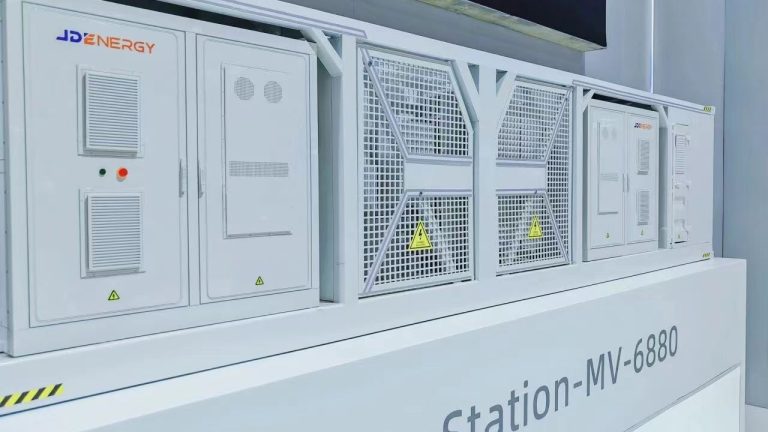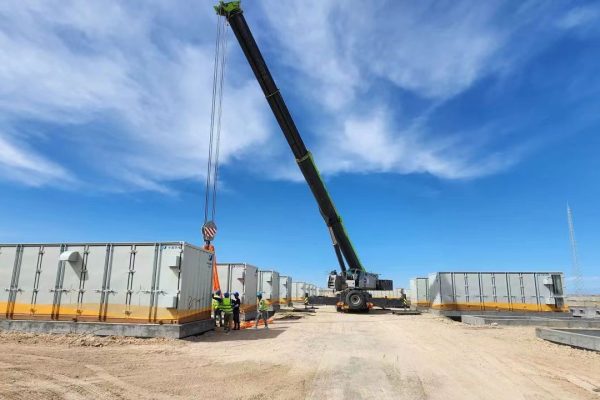Before any energy storage system (ESS) is delivered or installed, a thorough site survey is the foundation for success.
For small industrial and commercial projects — typically under 500 kWh — the quality of your site assessment directly determines system safety, performance, and client satisfaction.
A professional site survey not only helps in designing the right inverter, battery, and BOS (Balance of System) configuration,
but also prevents expensive on-site modifications, delays, or non-compliance issues.
This article outlines a step-by-step site survey checklist tailored for industrial PV + storage projects,
covering both technical and commercial aspects every EPC, distributor, or buyer should know.
1. Why a Site Survey Is Essential
A proper site survey ensures that:
- System design matches actual power needs and load profiles
- Equipment fits within available space and environment conditions
- Local grid parameters and safety standards are verified before installation
- Cable routing and logistics are planned realistically
⚙️ A 2-hour site visit can save thousands of dollars in rework and warranty costs.
2. Key Information to Gather Before the Visit
Before arriving on-site, request the following documents from the client or facility manager:
- Single-line diagram (if available)
- Electricity bills (3–6 months) — to understand load trends
- Main equipment list (compressors, motors, chillers, etc.)
- Floor plans or building layout
- Local grid connection type (single-phase or three-phase, voltage level)
- Peak demand data
📑 Collecting preliminary data helps tailor your survey focus and avoid incomplete assessments.
3. On-Site Survey Checklist Overview
| Category | Objective | Key Items to Record |
|---|---|---|
| Electrical | Verify load, grid, and panel condition | Voltage, frequency, cable size, breaker ratings |
| Mechanical | Assess space, structure, and ventilation | Dimensions, floor load, airflow |
| Environmental | Evaluate ambient conditions | Temperature, dust, humidity |
| Safety | Identify compliance risks | Grounding, clearance, fire safety |
| Logistical | Plan installation workflow | Crane access, cable routing, transport path |
4. Electrical Survey
(1) Power Connection
- Confirm grid voltage (e.g., 3-phase 380 V ± 10%)
- Measure neutral-to-earth voltage and frequency stability
- Identify main incoming switchboard and connection points
(2) Load Measurement
- Record peak and average load (kW) using a clamp meter or power analyzer
- Identify critical loads that require backup power (servers, control systems, etc.)
- Determine load type: resistive (lighting, heaters) vs. inductive (motors, pumps)
(3) Panel and Cable Condition
- Inspect existing breaker panels for available slots
- Note cable type, conductor size, and insulation state
- Check if neutral and grounding are properly separated
(4) Power Factor and Harmonics
- Measure PF and THD (Total Harmonic Distortion) — critical for inverter design
- Identify need for filters or compensation capacitors
⚡ Accurate electrical data ensures your hybrid inverter and battery capacity are correctly matched.
5. Mechanical and Space Survey
(1) Installation Area
- Measure available floor space and height
- Ensure clearance for inverter (≥ 0.5 m front and sides) and batteries (≥ 1 m from wall if rack-mounted)
- Verify if room temperature can stay between 15–30 °C
(2) Floor Loading
- Check if floor can handle > 500 kg/m² (for heavy lithium racks or containerized ESS)
- If not, consider steel frame reinforcement or wall-mount design
(3) Cable Routing
- Map DC and AC cable paths (from PV to inverter, battery, and grid)
- Identify wall penetrations or trench requirements
- Plan for separate conduits for DC, AC, and communication cables
(4) Ventilation and Cooling
- Check air circulation and fan direction
- Ensure at least 10 air changes/hour in ESS rooms
- Avoid direct sunlight and moisture
🧱 Thermal control and layout planning are often overlooked until it’s too late — inspect early.
6. Environmental Survey
- Record ambient temperature, humidity, and dust level
- Identify potential corrosive gases (e.g., near chemical or plating facilities)
- Check for vibration sources that may affect inverter electronics
- Determine if air filtration or dehumidification is required
🌦️ Environmental factors directly influence inverter lifespan and battery performance.
7. Safety and Compliance Check
(1) Grounding and Earthing
- Measure ground resistance (< 5 Ω typical for ESS)
- Confirm presence of separate earthing points for DC and AC circuits
- Plan equipotential bonding between inverter, battery, and cabinet
(2) Fire and Access Safety
- Identify fire extinguishers and emergency exits
- Ensure no flammable materials near ESS zone
- Mark maintenance access paths (≥ 800 mm wide)
(3) Regulatory Review
- Check if project requires local fire or grid inspection before commissioning
- Verify that system components hold IEC/UL/TÜV certifications
🧯 Safety documentation should be part of every project handover file.
8. Communication and Control Interface Survey
- Confirm BMS communication type (CAN, RS485, Modbus TCP)
- Record existing network ports or LAN/Wi-Fi availability
- Check for signal interference or shielding requirements
- Verify if the site requires remote monitoring or SCADA integration
📡 Reliable communication ensures smart management of charging, discharging, and remote updates.
9. Logistical and Construction Considerations
(1) Delivery Access
- Measure door width and height
- Check for forklift or crane availability
- Plan lifting points for racks, cabinets, or containers
(2) Cable and Conduit Path
- Pre-plan route from inverter to MCC or transformer
- Identify underground obstacles (pipes, ducts)
- Confirm cable length and trenching feasibility
(3) Power Outage Coordination
- Schedule installation to minimize downtime
- Notify facility before breaker isolation or grid connection tests
🏗️ Good logistics prevent costly disruptions to industrial operations.
10. Documentation and Photos
Take clear photos of:
- Electrical panels, cable entry points, and breaker labels
- Available space (front, side, top view)
- Ventilation openings and room layout
- Grounding terminals and signage
📸 Photos are crucial for accurate proposal drafting and factory preconfiguration.
11. Data Summary Sheet (Example)
| Parameter | Measured Value | Notes |
|---|---|---|
| Grid Voltage | 380 V ± 3% | Stable |
| Peak Load | 85 kW | 3× compressors |
| PF | 0.92 | Acceptable |
| Temperature | 28 °C | Normal |
| Ground Resistance | 3.2 Ω | OK |
| Room Size | 4 m × 3 m | Fits 2 racks |
| Cable Path | 12 m | Straight run |
| Internet | Available | Wi-Fi router near MCC |
📊 A standardized survey form helps your engineering team finalize system sizing and layout faster.
12. Recommended Tools for Site Surveys
- Clamp meter / power analyzer
- Thermal camera (for panel temperature)
- Laser distance meter
- Insulation resistance tester
- Earth resistance meter
- Infrared thermometer
- Portable fan and light for dark sites
🧰 Professional tools demonstrate credibility to your industrial clients.
13. Common Mistakes During Site Surveys
| Mistake | Result | Prevention |
|---|---|---|
| Ignoring grounding measurement | Fault risk | Always check resistance |
| No photo documentation | Design errors | Take 360° room photos |
| Forgetting ventilation check | Overheating | Record airflow rate |
| Wrong breaker size assumption | Delays | Verify labels or measure directly |
| Skipping communication test | Data loss | Confirm RS485/CAN functionality |
🚫 Skipping minor checks leads to major installation headaches.
A detailed site survey transforms uncertain assumptions into reliable design data.
For small industrial storage projects, it is the bridge between engineering accuracy and on-site practicality.
✅ Key Takeaways:
- Record actual grid voltage, load type, and peak power.
- Measure room size, ventilation, and grounding.
- Verify breaker ratings and cable paths.
- Take comprehensive photos and prepare a report.
Doing so helps you deliver faster installations, fewer errors, and higher client confidence —
the hallmarks of a professional energy storage supplier or EPC partner.









